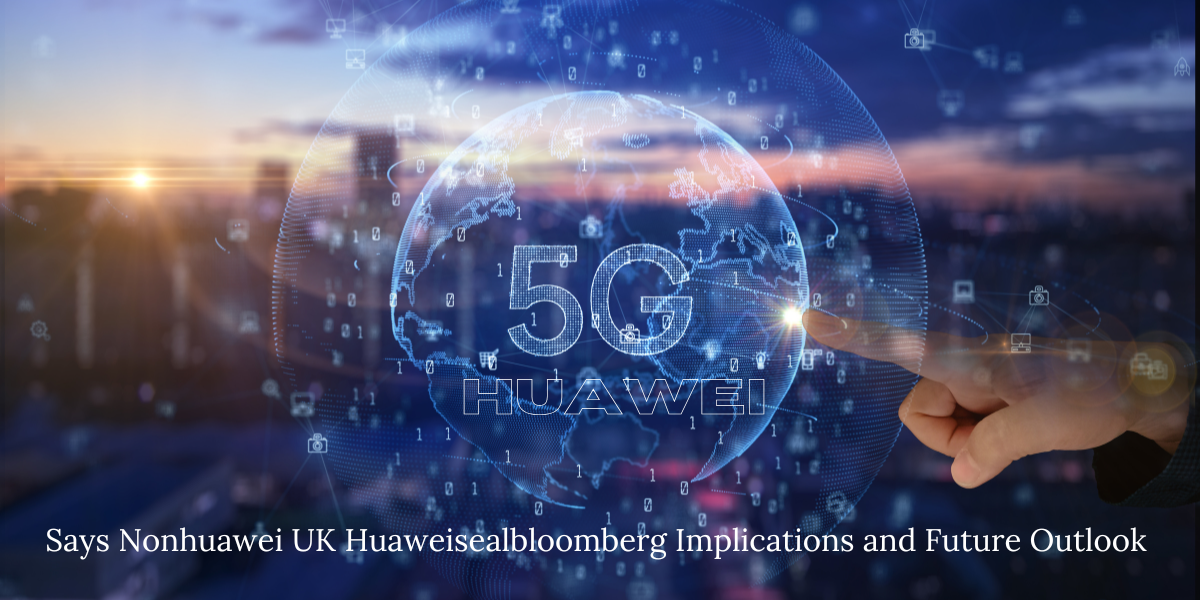In recent years, the United Kingdom’s relationship with Huawei, the Chinese telecommunications giant, has undergone significant transformation. Once a symbol of Sino-British technological collaboration, Huawei’s role in the UK’s 5G infrastructure has been drastically reduced due to mounting security concerns and geopolitical pressures. This article delves into the journey from partnership to prohibition, examining the key events and decisions that have shaped this narrative.
Huawei’s Initial Foray into the UK Market
Huawei’s engagement with the UK began in 2001, marking the company’s first significant venture into international markets. Over the years, Huawei established a substantial presence, employing over 1,500 individuals across 15 offices, including its headquarters in Reading. In 2018, Huawei’s Chairwoman, Madam Sun Yafang, met with UK Prime Minister Theresa May, announcing a commitment to procure £3 billion in the UK over the subsequent five years. This pledge aimed to bolster UK companies’ exports to China and solidify Huawei’s investment in the region.
Read Also: Christina Plate 2023 Look at Life, Career of German Actress
The Turning Point Security Concerns and Policy Reversals
Despite the promising partnership, concerns over Huawei’s ties to the Chinese government and potential security risks began to surface. In July 2020, the UK government, under Prime Minister Boris Johnson, announced a ban on Huawei’s involvement in the nation’s 5G networks. This decision mandated that telecom operators cease purchasing Huawei 5G equipment by the end of 2020 and remove all existing Huawei 5G hardware by 2027. The move was influenced by new U.S. sanctions restricting Huawei’s access to semiconductor technology, raising doubts about the security of Huawei’s equipment.
Legislative Measures and Accelerated Timelines
To enforce this policy shift, the UK government introduced the Telecommunications Security Bill in November 2020. This legislation granted authorities the power to control the use of “high-risk” vendors, such as Huawei, within the UK’s telecom infrastructure. It also imposed hefty fines—up to 10% of a company’s turnover or £100,000 per day—for non-compliance. Furthermore, the government accelerated the timeline, requiring telecom providers to halt the installation of new Huawei 5G equipment by September 2021.
Read Also: Nicole Johag Krankheit Journey with Multiple Sclerosis
Industry Impact and Response
The exclusion of Huawei from the UK’s 5G networks posed significant challenges for telecom operators. Companies like BT and Vodafone faced the daunting task of replacing existing Huawei equipment, a process entailing substantial financial and logistical burdens. BT’s CEO, Philip Jansen, warned that a rushed removal could lead to network outages and service disruptions. The accelerated timeline intensified these concerns, as operators had to expedite their plans to comply with the new regulations.
Geopolitical Ramifications
The UK’s decision to ban Huawei was not made in isolation; it was heavily influenced by geopolitical dynamics, particularly pressure from the United States. The U.S. government had long expressed apprehensions about Huawei, alleging that the company’s equipment could be used for espionage by the Chinese state—a claim Huawei consistently denied. The UK’s policy reversal strained its relations with China, leading to warnings from Beijing about potential retaliatory measures. This situation underscored the complex interplay between national security concerns and international trade relations.
Read Also: Parker Schnabel Freundin Love Life Relationships, Rumors, and Reality
Huawei’s Resilience and Future Prospects
Despite facing significant setbacks due to bans and sanctions in various countries, Huawei has demonstrated resilience. The company invested heavily in research and development, aiming to reduce its reliance on foreign technologies. In August 2023, Huawei launched the Mate 60 Pro smartphone, featuring a 5G processor developed in collaboration with China’s Semiconductor Manufacturing International Corporation (SMIC). This development indicated Huawei’s determination to overcome challenges posed by international sanctions and continue its operations on the global stage.
Conclusion
The trajectory of Huawei’s involvement in the UK’s telecommunications infrastructure reflects a broader narrative of technological collaboration complicated by security concerns and geopolitical tensions. As nations worldwide grapple with balancing technological advancement and national security, the Huawei case serves as a pivotal example of the challenges inherent in this endeavor.
Read Also: Now.gg Roblox Play Roblox Online Without Downloading
FAQs About Says Nonhuawei UK Huaweisealbloomberg
Q1: Why did the UK decide to ban Huawei from its 5G networks?
A1: The UK government’s decision was primarily driven by security concerns, particularly in light of new U.S. sanctions that restricted Huawei’s access to semiconductor technology. These sanctions raised doubts about the security and reliability of Huawei’s equipment in the UK’s 5G infrastructure.
Q2: What are the deadlines set by the UK government regarding Huawei’s equipment?
A2: Telecom operators were required to stop purchasing Huawei 5G equipment by the end of 2020. Additionally, all existing Huawei 5G hardware must be removed from the UK’s networks by 2027. The installation of new Huawei 5G equipment was prohibited after September 2021.
Q3: How has Huawei responded to the bans and sanctions imposed by various countries?
A3: Huawei has invested heavily in research and development to reduce its dependence on foreign technologies. In August 2023, the company launched the Mate 60 Pro smartphone, featuring a 5G processor developed in collaboration with China’s SMIC, showcasing its resilience and adaptability in the face of international challenges.
Q4: What impact does the Huawei ban have on UK telecom operators?
A4: UK telecom operators, such as BT and Vodafone, face significant challenges in replacing existing Huawei equipment. The process involves substantial financial costs and logistical complexities, with concerns about potential network outages and service disruptions during the transition.



